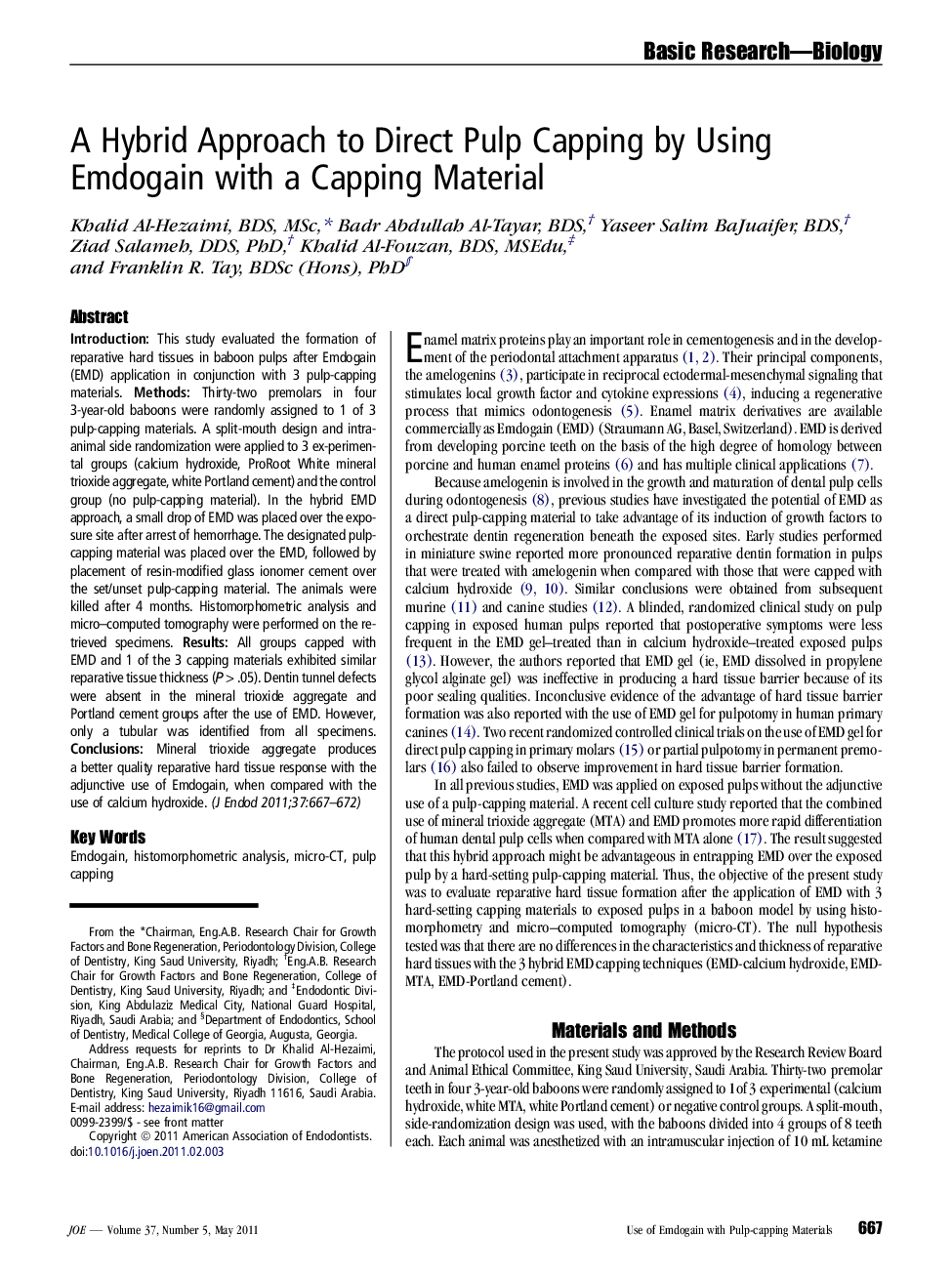| کد مقاله | کد نشریه | سال انتشار | مقاله انگلیسی | نسخه تمام متن |
|---|---|---|---|---|
| 3150522 | 1197543 | 2011 | 6 صفحه PDF | دانلود رایگان |

IntroductionThis study evaluated the formation of reparative hard tissues in baboon pulps after Emdogain (EMD) application in conjunction with 3 pulp-capping materials.MethodsThirty-two premolars in four 3-year-old baboons were randomly assigned to 1 of 3 pulp-capping materials. A split-mouth design and intra-animal side randomization were applied to 3 ex-perimental groups (calcium hydroxide, ProRoot White mineral trioxide aggregate, white Portland cement) and the control group (no pulp-capping material). In the hybrid EMD approach, a small drop of EMD was placed over the exposure site after arrest of hemorrhage. The designated pulp-capping material was placed over the EMD, followed by placement of resin-modified glass ionomer cement over the set/unset pulp-capping material. The animals were killed after 4 months. Histomorphometric analysis and micro–computed tomography were performed on the re-trieved specimens.ResultsAll groups capped with EMD and 1 of the 3 capping materials exhibited similar reparative tissue thickness (P > .05). Dentin tunnel defects were absent in the mineral trioxide aggregate and Portland cement groups after the use of EMD. However, only a tubular was identified from all specimens.ConclusionsMineral trioxide aggregate produces a better quality reparative hard tissue response with the adjunctive use of Emdogain, when compared with the use of calcium hydroxide.
Journal: Journal of Endodontics - Volume 37, Issue 5, May 2011, Pages 667–672